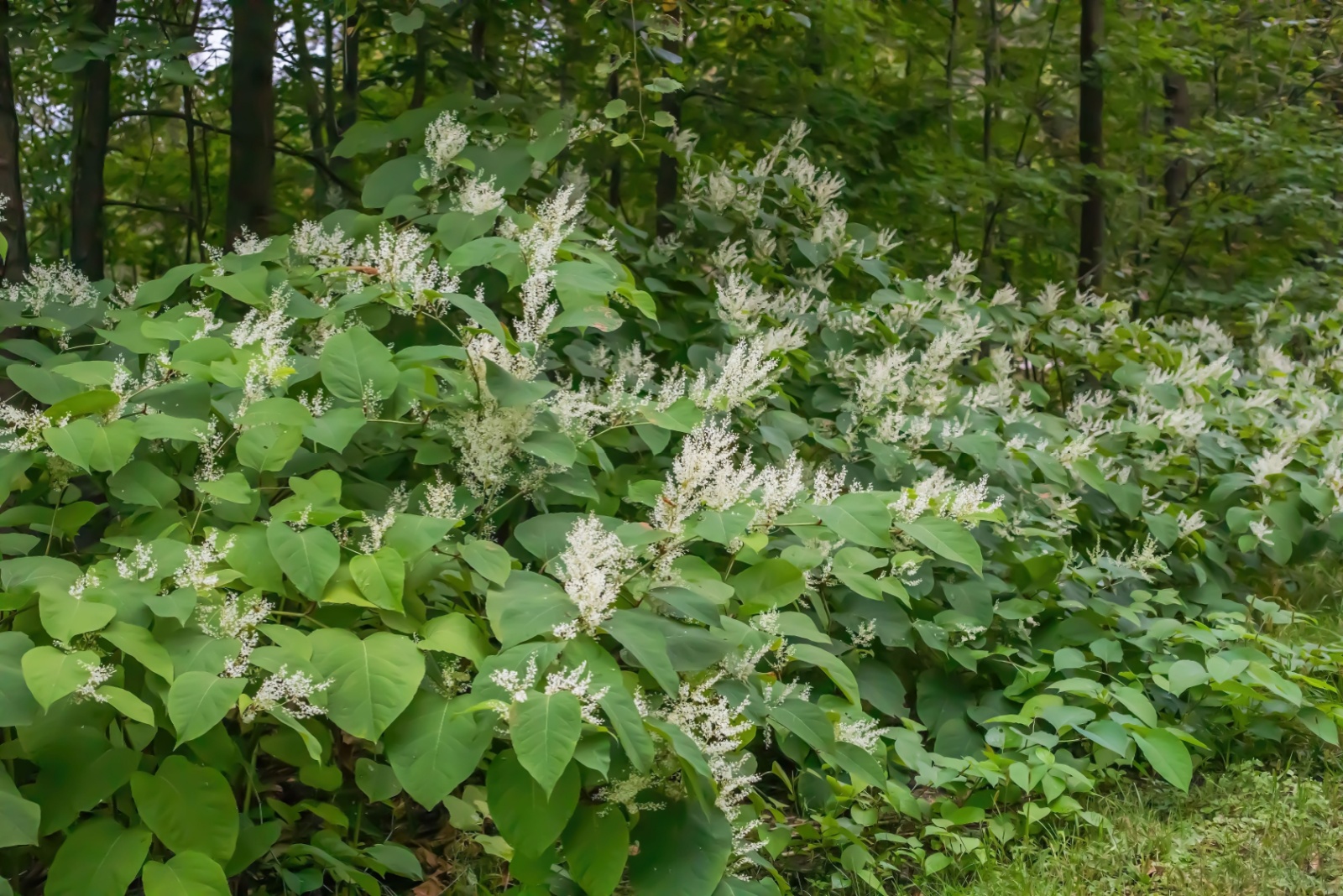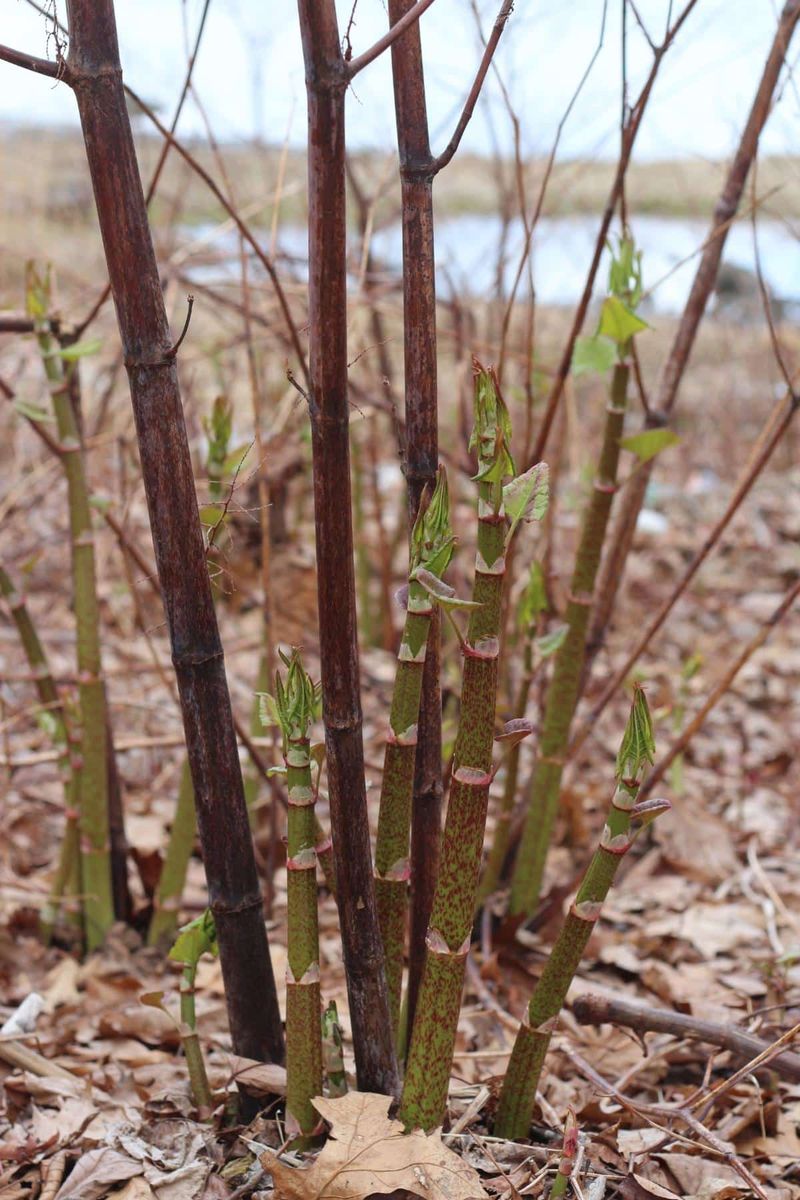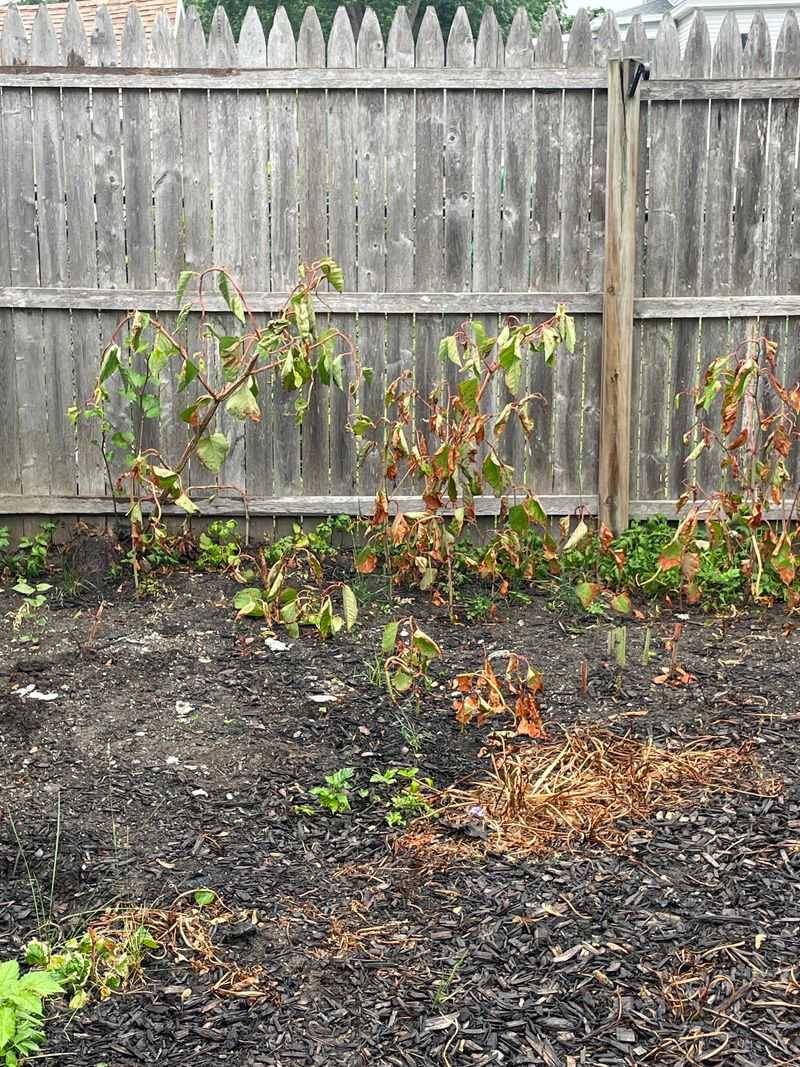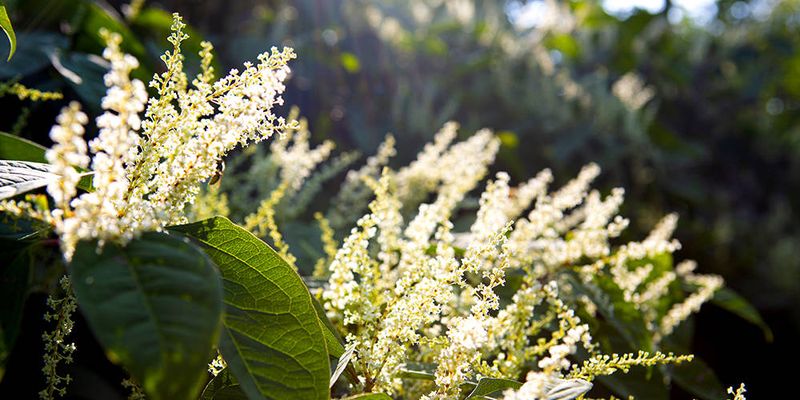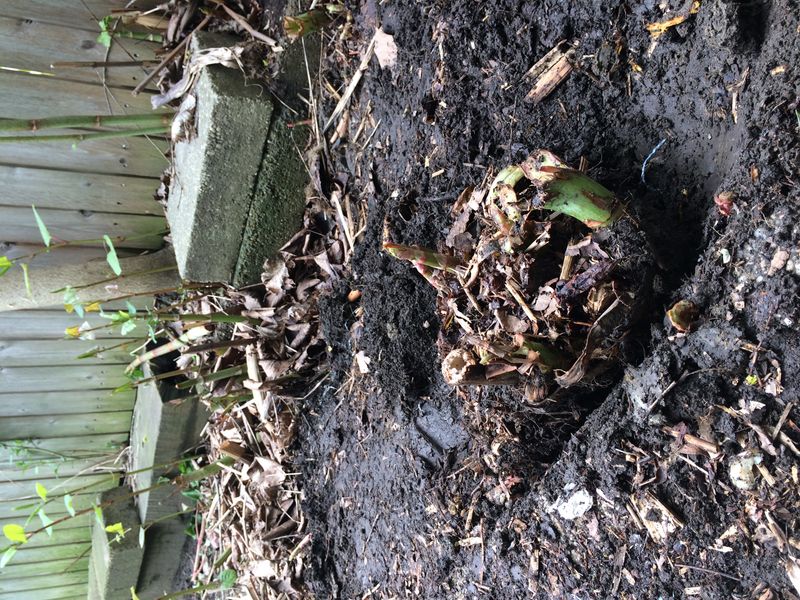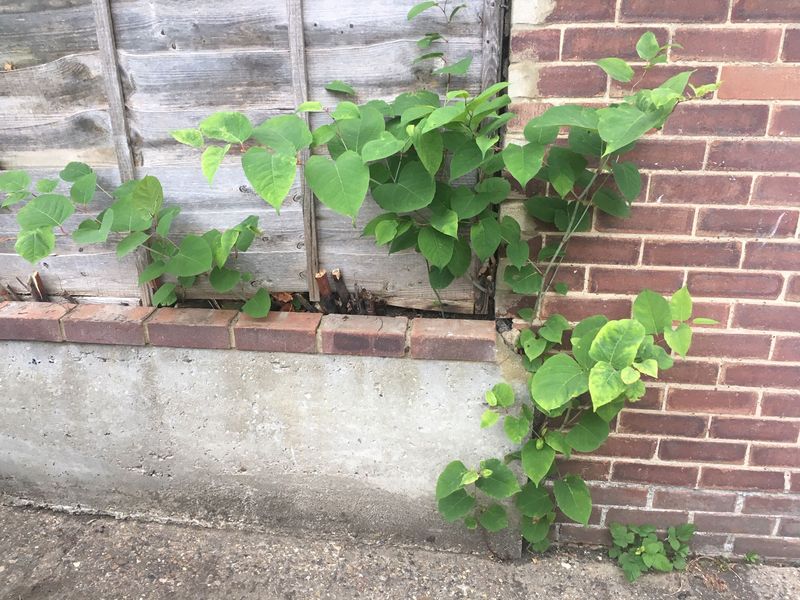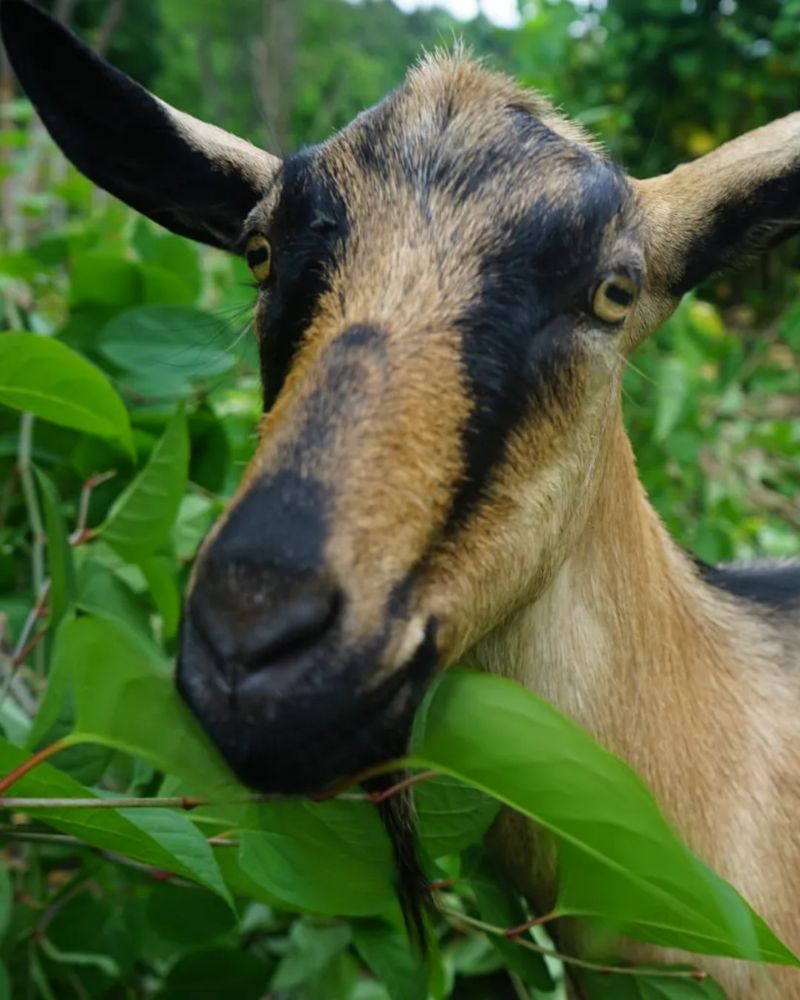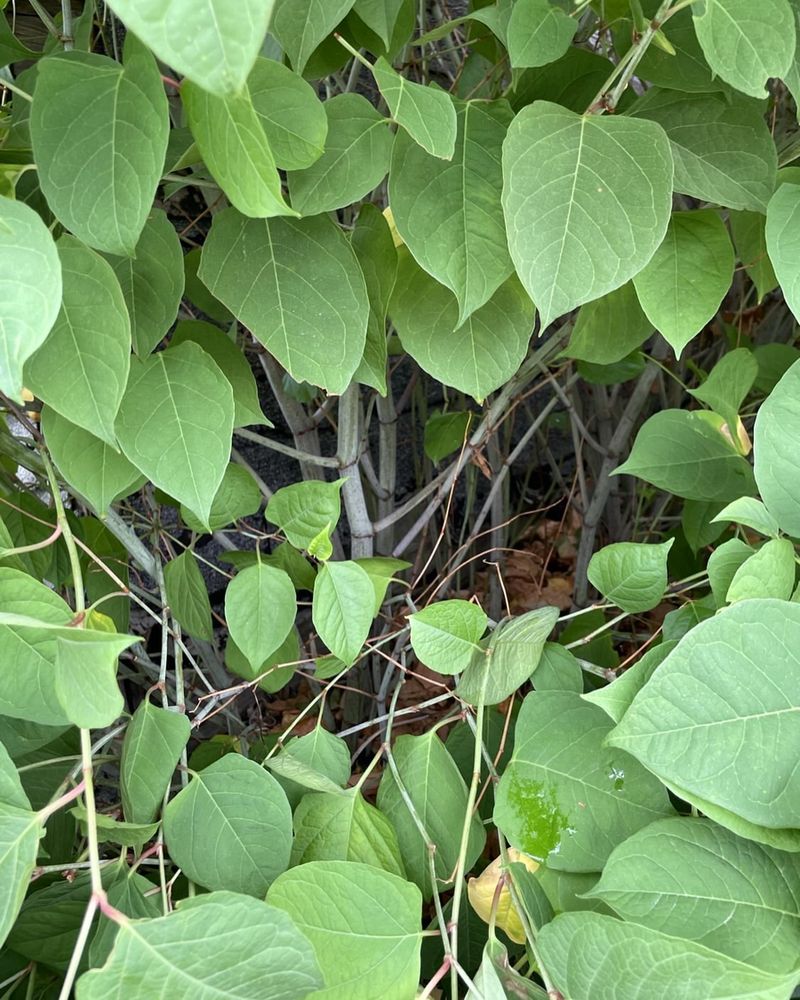Japanese knotweed has become one of the most stubborn invaders in Maine gardens. This aggressive plant spreads quickly and can damage foundations, driveways, and native ecosystems.
Many gardeners across the state have discovered natural ways to fight back without harsh chemicals, protecting both their property and the environment.
1. Repeated Cutting and Mowing
Persistence pays off when battling this invasive plant. By cutting the stems down to ground level every two weeks during growing season, you exhaust the plant’s energy reserves stored in its roots.
Maine gardeners swear by keeping a sharp pair of loppers handy from May through September. Each time new shoots appear, chop them down immediately before they can photosynthesize and feed the root system below.
Most folks see significant weakening after one full season of diligent cutting, though complete elimination typically takes two to three years of consistent effort.
2. Covering with Heavy Tarps
Sunlight starvation works wonders against Japanese knotweed. Covering infested areas with thick, UV-resistant tarps blocks all light, preventing photosynthesis and slowly killing the root system underneath.
Secure the edges with heavy rocks, bricks, or landscape staples to prevent any light leaks. Leave the tarps in place for at least two full growing seasons, checking periodically for any sneaky shoots trying to escape around the edges.
Many Maine gardeners appreciate this low-maintenance approach since it requires minimal ongoing effort once properly installed.
3. Planting Competitive Ground Covers
After weakening knotweed through cutting, smart gardeners plant aggressive native species to claim the territory. Dense ground covers like wild strawberry, creeping thyme, or native grasses compete for nutrients, water, and space that knotweed needs to regrow.
The key is choosing plants that spread quickly and establish thick root systems. Once these beneficial plants take hold, they create a living barrier that makes it harder for knotweed to stage a comeback.
This method works best as a follow-up strategy rather than a standalone solution.
4. Digging Out Root Systems
Rolling up your sleeves for some serious excavation can eliminate small patches effectively. Japanese knotweed roots, called rhizomes, can extend ten feet deep and twenty feet outward, so this method demands serious commitment and muscle.
Start by cutting stems, then carefully dig around the entire area, removing every piece of root material you can find. Even tiny fragments left behind can regenerate into new plants, so thoroughness matters more than speed.
Dispose of all plant material in sealed bags, never in compost piles where they might spread further.
5. Applying Vinegar Solutions
Household vinegar becomes a natural weapon when used strategically. Mix white vinegar with a concentration of at least 20% acetic acid and spray directly onto freshly cut knotweed stems and leaves during dry, sunny weather for maximum absorption.
The acidic solution burns foliage and can damage surface roots when applied repeatedly. Maine gardeners often combine this with cutting methods, spraying immediately after trimming to penetrate the open stems.
Remember that vinegar kills indiscriminately, so protect nearby plants you want to keep with cardboard shields during application.
6. Introducing Grazing Animals
Goats and sheep love munching on Japanese knotweed shoots, making them unlikely allies in your battle. Several Maine farms rent out small herds specifically for invasive plant control, and the animals happily devour fresh growth throughout the season.
Their constant grazing weakens the plant similarly to repeated cutting but requires zero effort on your part. The animals also fertilize the soil naturally while they work.
Rotational grazing works best, moving animals between areas to prevent overgrazing while maintaining pressure on the knotweed population throughout spring and summer months.
7. Applying Boiling Water Treatments
Scalding water delivers a one-two punch against stubborn knotweed. After cutting stems to ground level, immediately pour boiling water directly onto the exposed stumps and surrounding soil to cook the shallow roots and rhizomes below.
The extreme heat destroys plant cells on contact and penetrates several inches into the soil. Repeat this treatment every time new shoots emerge, ideally once weekly during peak growing season.
This old-fashioned technique works particularly well for small infestations near the house where you have easy access to boiling water from the kitchen stove.

